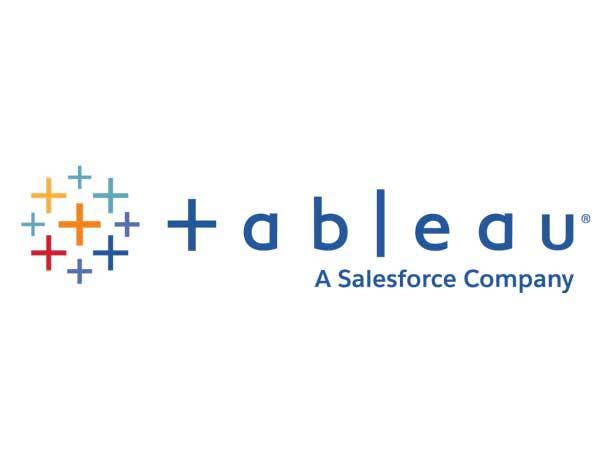Salesforce’s Q4 Earnings: 5 Things To Know
‘Our goal is to make Salesforce the largest and most profitable software company in the world,’ Salesforce CEO and co-founder Marc Benioff said Wednesday.

Salesforce may have beat expectations for its fourth fiscal quarter and set the bar high for the current fiscal year, but the enterprise applications vendor still has to appease doubters about its ability to cut costs and grow margins.
These are some of the takeaways from Salesforce’s latest quarterly earnings – for the quarter ended Jan. 31.
“Our goal is to make Salesforce the largest and most profitable software company in the world,” Salesforce CEO and co-founder Marc Benioff said Wednesday during the vendor’s quarterly earnings call. “And that is what we are doing.”
[RELATED: Salesforce Has Another Activist Investor: Report]
Salesforce Q4 Earnings
CRN has reached out to Salesforce for comment on what the company’s reexamination of its go-to-market strategy means for channel partners.
Toward the end of 2022, Salesforce combined its partner programs for subsidiaries Tableau and MuleSoft. And subsidiary Slack has made efforts to grow its partnerships.
Salesforce’s stock traded at about $187 a share Thursday morning Pacific time, up about 12 percent from market close Wednesday.
Here’s what you need to know.

Beating Expectations ...
Multiple reports from investment firms issued Wednesday and Thursday highlighted the areas where Salesforce beat expectations for the fourth fiscal quarter and in the company’s guidance for the current fiscal year.
A Thursday report from Morgan Stanley said that current remaining performance obligation (cRPO) was 12 percent higher year over year, beating the 7 percent exception. Salesforce reported $24.6 billion in cRPO.
Subscription revenue grew 14 percent year over year, beating the 8.5 percent expectation.
And operating margins not calculated by generally accepted accounting principles (GAAP) were 29 percent, above the 22 percent estimate.
Subscription revenue growth of 14 percent counting foreign exchange rates exceeded the expected 5.5 percent, according to Morgan Stanley. Salesforce reported $7.8 billion in subscription revenue.
In KeyBanc’s Thursday report, the firm said that collaboration application Slack’s $410 million in revenue for the quarter beat KeyBanc’s $379 million estimate. Slack brought in $1.5 billion for the fiscal year.
Salesforce billings of $14.6 billion, a 13 percent growth year over year, beat Wall Street expectations of $13.8 billion, 8 percent growth year over year.
For the 2024 fiscal year expectations, a 10 percent growth to at least $34.5 billion in revenue is above the expected revenue growth of less than 10 percent, according to Morgan Stanley.
The company’s expected fiscal year 2024 margins of 27 percent is ahead of Wall Street’s 23 percent expectation.
“We continue to believe in Salesforce’s long-term positioning as a core consolidator of front-office functionality and the opportunity for margin expansion,” according to Morgan Stanley.
KeyBanc said it continues “to see long-term drivers for Salesforce as the market share leader in front office digital transformation.”
As a Thursday report from Wedbush put it, “With activists swirling and Street frustration at a boiling point, Benioff & Co. with its back against the wall delivered a monster quarter and guide for the ages that will silence the doubters this morning.”

Concerns Linger
Jesse Cohn, a managing partner of Elliott Management, one of the activist investors to take a stake in Salesforce, tweeted a statement Wednesday praising some of Salesforce’s efforts and progress, but noting that “much work remains.”
“Salesforce needs a sustainable leadership plan and a board that demonstrates it can provide accountability through proper oversight,” according to the Elliott statement.
This year, Salesforce has seen multiple changes in its C-suite with the departure of President and Chief Strategy Officer Gavin Patterson, co-CEO Bret Taylor and Slack CEO Stewart Butterfield.
A Wednesday report from AllianceBernstein – which downgraded Salesforce in January to an “underperform” rating – said the vendor has ““a bumpy road ahead.”
While praising some of Salesforce’s results, AllianceBernstein noted that “this was delivered in conjunction with a ~50 percent decrease in the revenue growth rate for FY24 and after numerous news articles of unhappy employees.”
Salesforce notably did not maintain its promise of $50 billion in revenue by fiscal year 2026 “due to the uncertain macro and currency environment,” Chief Financial Officer Amy Weaver said on the earnings call.
The firm downgraded Salesforce in January because of ongoing missed expectations and a thesis that Salesforce has masked years of deceleration through acquisitions, according to MarketWatch.
“With the tailwinds from M&A no longer enough, core markets approaching cloud saturation, competition increasing, and macro issues hitting growth, management is aggressively pivoting to driving margins,” AllianceBernstein said in January. “But the cuts are going to negatively impact efficiency, growth, and customer/employee satisfaction. Margin improvement will be less than expected in our view, and will appear over multiple years.”
Morgan Stanley’s report said analysts will watch for any execution issues as Salesforce restructures its go-to-market strategy, reduces spans of control and explores more bundling of products and services.

Ongoing Cost Cutting, Restructuring
In KeyBanc’s Thursday report, the firm said it believes Salesforce will make “further productivity-based headcount reductions.”
In January, Salesforce announced the layoffs of 7,000 employees, a workforce reduction of about 10 percent.
Although Benioff and his team signaled no more mergers and acquisitions ahead by disbanding the board M&A committee, KeyBanc’s report predicted “room for smaller acquisitions.”
Salesforce previously bought collaboration application Slack for $27.7 billion in 2021.
Despite no comments on the earnings call about selling off subsidiaries such as Slack, Tableau and MuleSoft, Wedbush’s report said, “We ultimately believe other strategic options could still be on the table including a potential spin-off of the Slack asset further down the road.”
Cost cutting has not come at the expense of customer satisfaction, Benioff said on Wednesday’s call. As an example, customer revenue attrition was at its lowest level in Salesforce’s history.
The company has also enlisted consulting firm Bain & Co. to help with more go-to-market, structural and operating improvements.
“We’re also laser-focused on performance, productivity and accountability of all of our teams,” Salesforce President and Chief Operating Officer Brian Millham said. “We’re better aligning incentives with margins, removing layers and increasing spans of control to unleash even higher performance.”
Some of the changes for Salesforce sales employees have included reducing onboarding of new employees to weeks from months, Millham said. Account executives also have to be in front of a customer four days a week. Executives who exclusively worked from home during the pandemic saw productivity drop.
Salespeople have also been trained to talk more about how Salesforce products can help customers with time-to-value, automation, digital transformation, efficiencies and cost reductions, he said.
“We’ve always kept productivity flat and hired more AEs (account executives) to drive our growth,” he said. “We’re going to inverse that equation going forward and think about productivity as our driver going forward.”

Salesforce Invests In AI
Salesforce has also bought into the craze around generative artificial intelligence (AI) such as the ChatGPT text-generating program and Dall-E image-generating program created by Microsoft-backed OpenAI.
In February, Benioff tweeted about a Salesforce EinsteinGPT offering that can generate leads and close deals.
On Wednesday’s call, he said that EinsteinGPT will integrate with all Salesforce cloud offerings plus its Tableau, MuleSoft and Slack subsidiaries.
“It is another way we‘re opening the door to use AI for our future and for all of our customers,” Benioff said.
Customers have used Slack as the user interface for generative AI assistants, Benioff said.
“The relevance of Slack as an incredible enterprise productivity platform, user interface and critical datasets for these new AI systems. – well, it‘s inspiring all kinds of new use cases,” he said. “I couldn’t be more excited about the future.”
The growth of AI as well as the internet of things (IoT) is an opportunity for other Salesforce products, he said.
“We‘ve always been influenced by the world of AI and IoT and seeing our customers try to add in all of their intelligent devices onto our platform so they can have better relationships with their customers who are connected to them in these incredible new ways,” he said.
One of the fastest-growing products during the quarter was Salesforce’s Data Cloud, which can ingest a customer’s AI model and provide automation and analytics.
Salesforce recently deepened the integration between Data Cloud and Tableau to provide visualization for customer data, Benioff said.

MuleSoft, Tableau Improvements
Salesforce CFO Weaver cited reignited MuleSoft and Tableau licenses sales as a driver for the $8.38 billion in revenue delivered during the quarter – a 17 percent year over year increase, ignoring foreign exchange rates.
Benioff said Salesforce has “focused over the past few quarters on reigniting MuleSoft sales growth.”
During the quarter, MuleSoft was in seven of the top 10 deals of the quarter. Tableau was in all of the deals.
“These acquired products are integral to our Customer 360 and enabling our customers to use our data product line to achieve a new level of excellence in managing their customer relationships and its critical data,” Benioff said.